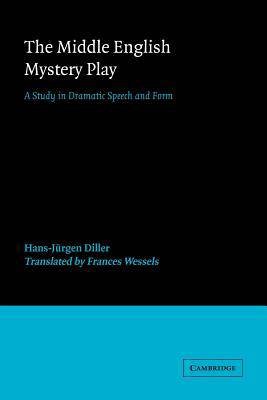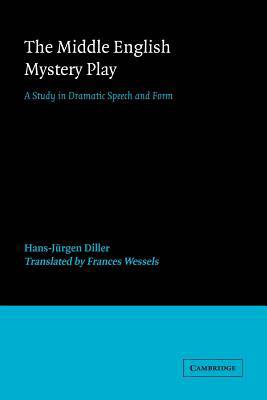
- Afhalen na 1 uur in een winkel met voorraad
- Gratis thuislevering in België vanaf € 30
- Ruim aanbod met 7 miljoen producten
- Afhalen na 1 uur in een winkel met voorraad
- Gratis thuislevering in België vanaf € 30
- Ruim aanbod met 7 miljoen producten
Zoeken
The Middle English Mystery Play
A Study in Dramatic Speech and Form
Hans-J]rgen Diller, Diller Hans-Jurgen
€ 72,45
+ 144 punten
Omschrijving
The mystery plays of medieval England have traditionally been analysed in ways which centre on the texts and their religious significance. Hans-Jurgen Diller's major study, first published in German, seeks to recover their dramatic potential by focusing on the function of language in conventional modes of speech, prayer, address and dialogue. He looks at speech and dramatic form in the plays to reveal new insights concerning spatial and temporal orientation, the expression of emotions, and the relationships between characters on stage, between actor and audience, and between the dramatic world and the ordinary world outside it. His analysis offers new ways of understanding the relationship of vernacular drama to its liturgical antecedents, and new means of distinguishing stylistically between the cycles and between the groups of plays they comprise.
Specificaties
Betrokkenen
- Auteur(s):
- Vertaler(s):
- Uitgeverij:
Inhoud
- Aantal bladzijden:
- 356
- Taal:
- Engels
- Reeks:
Eigenschappen
- Productcode (EAN):
- 9780521023115
- Verschijningsdatum:
- 24/11/2005
- Uitvoering:
- Paperback
- Formaat:
- Trade paperback (VS)
- Afmetingen:
- 152 mm x 229 mm
- Gewicht:
- 521 g

Alleen bij Standaard Boekhandel
+ 144 punten op je klantenkaart van Standaard Boekhandel
Beoordelingen
We publiceren alleen reviews die voldoen aan de voorwaarden voor reviews. Bekijk onze voorwaarden voor reviews.











